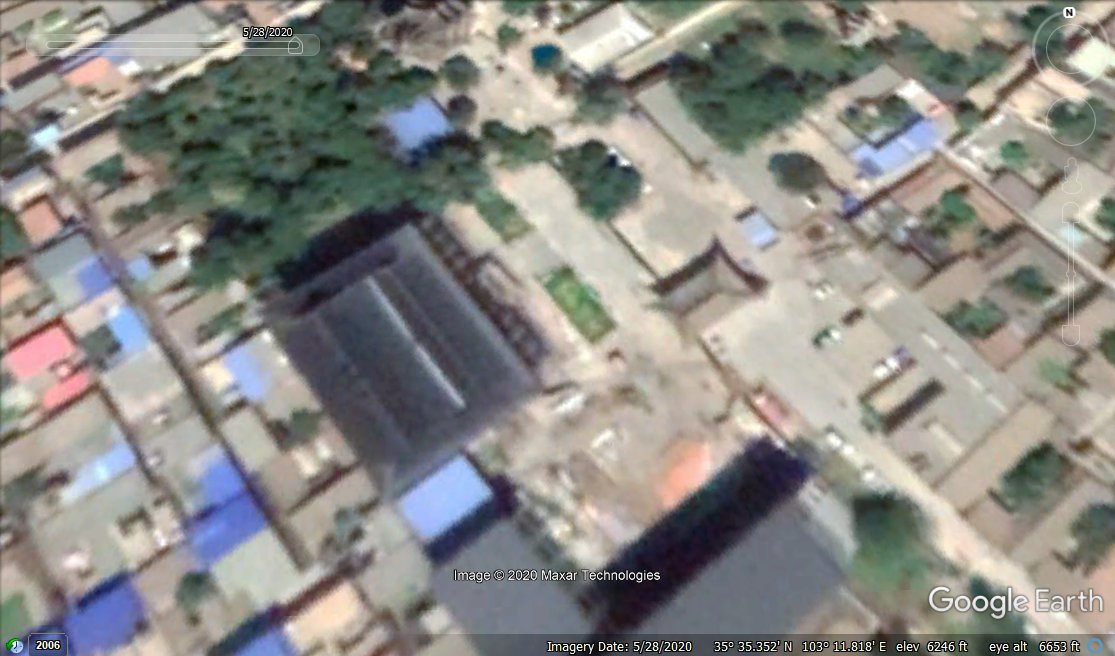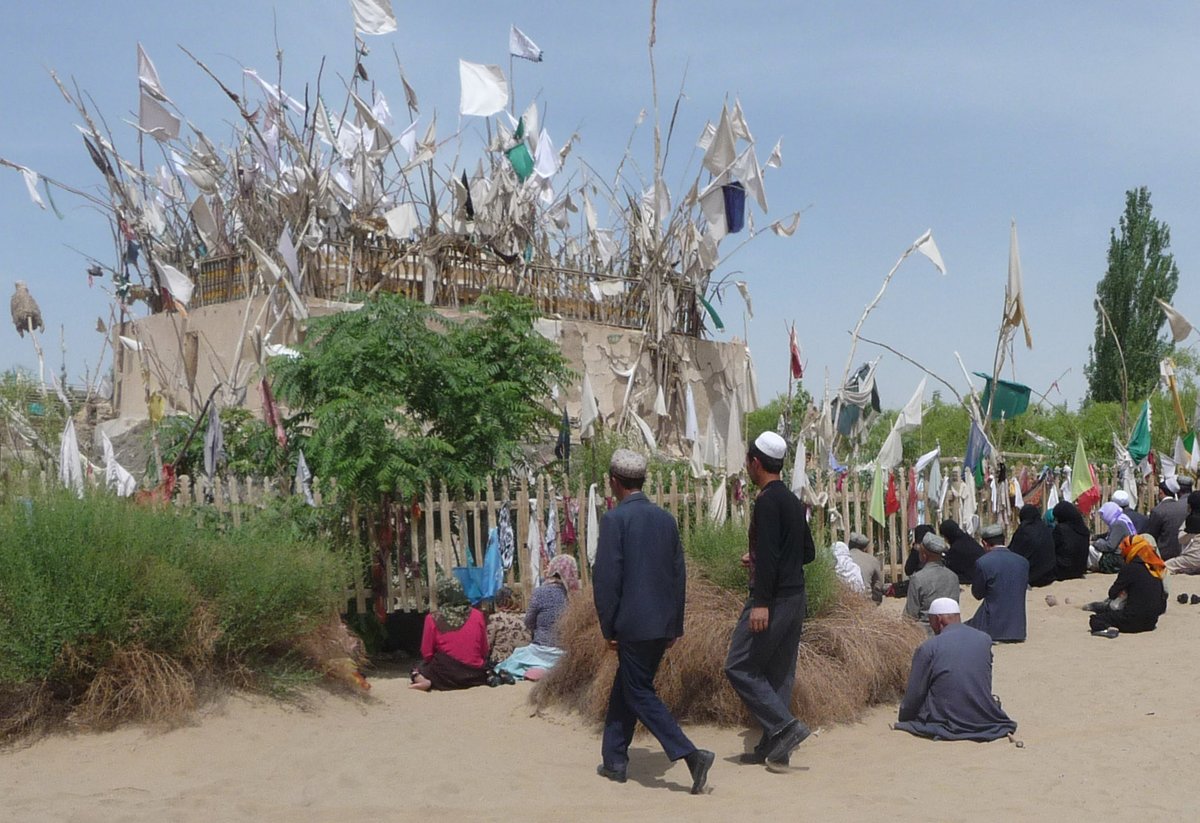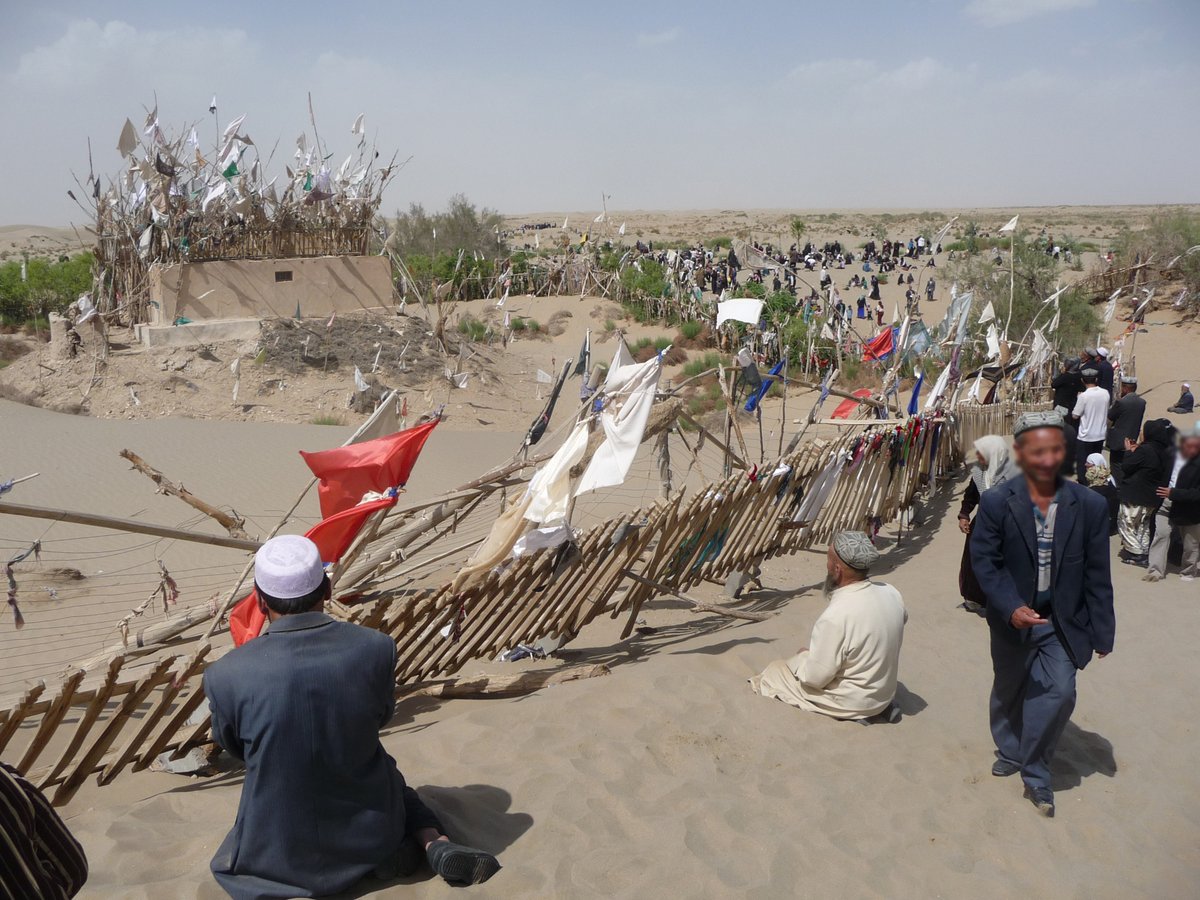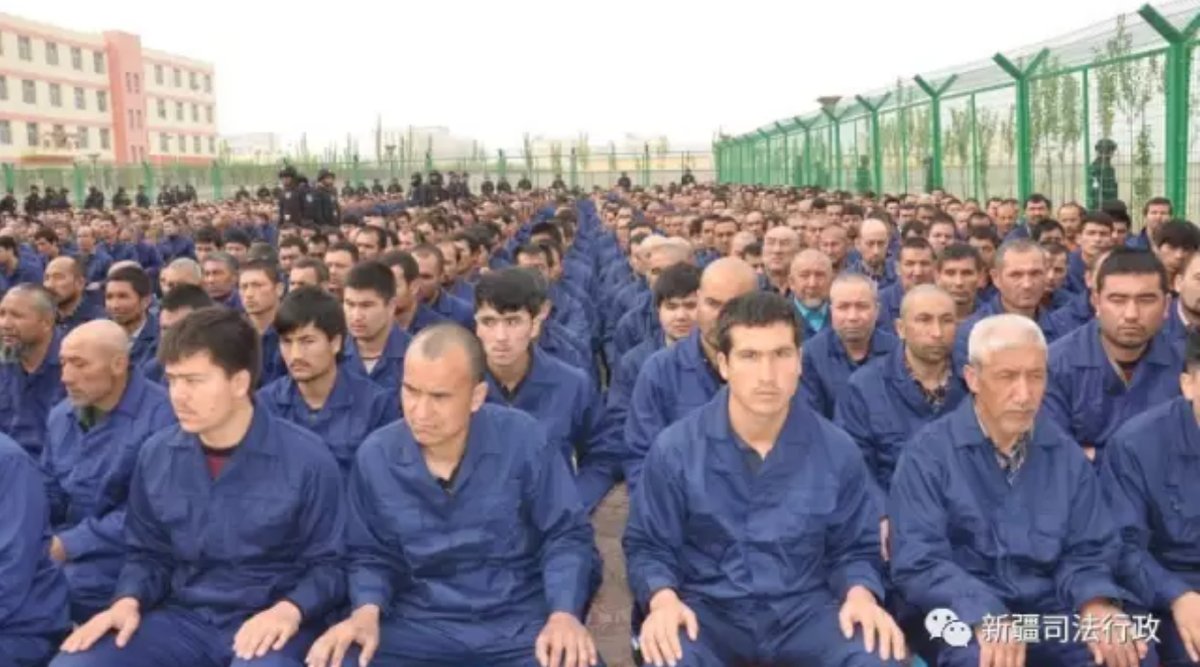While the Chinese state has destroyed some of the most important Uyghur sacred and historical sites, they have supported the construction of invented sites, with exoticizing, primitivizing, fantasies of indigenous culture. Here is Xitiya "Mystery City" (photo from CITS site).🧵 

Begun in 2011 and still expanding as of the last two years, Xitiya, near Karghalik, appropriates elements of Uyghur shrine architecture that are being destroyed at actual sacred places. For example, this "sacred tree" has Uyghur-style votive ribbons attached. 
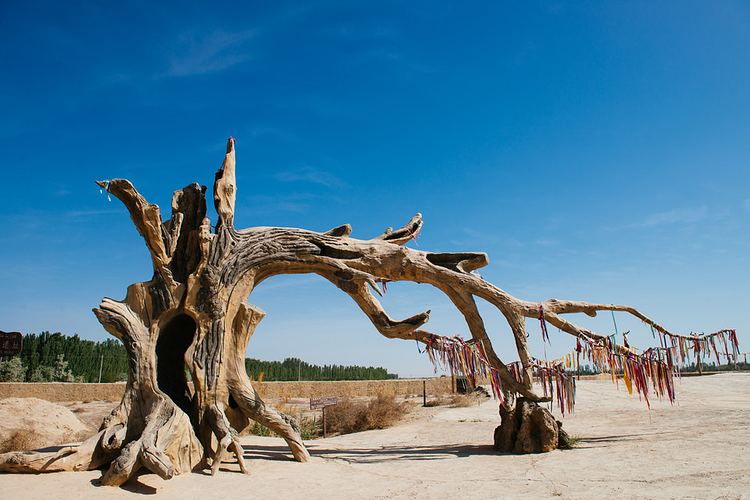
These elements are mixed with exoticizing concoctions that have nothing to do with any local traditions, like this altar: 

Incredible how perfectly this video of Xitiya repeats Orientalist tropes of various colonialisms around the world. v.youku.com/v_show/id_XNTM… 

For context, my article on the systematic destruction of Uyghur heritage: madeinchinajournal.com/2020/08/24/the…
Satellite imagery and video from the construction firm show that the complex was built from scratch. It is billed as a "restoration" of an archaeological site, but it has little to do with what we know about medieval architecture in the region.
Meanwhile, domes like the ones built for tourists at Xitiya are being removed from mosques across China at the command of the state:
https://twitter.com/RianThum/status/1307377409621196802?s=20
• • •
Missing some Tweet in this thread? You can try to
force a refresh


